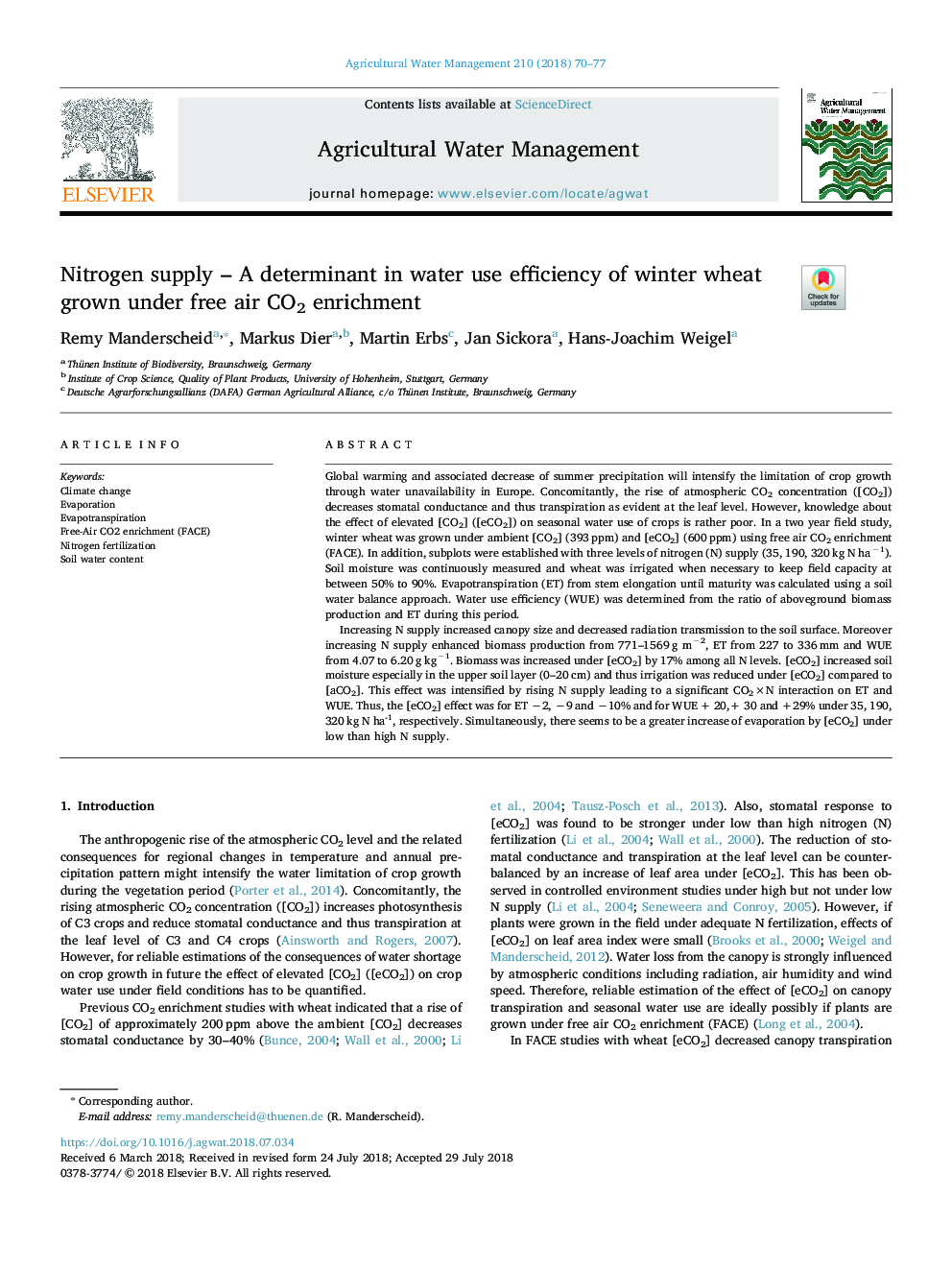| Article ID | Journal | Published Year | Pages | File Type |
|---|---|---|---|---|
| 8872703 | Agricultural Water Management | 2018 | 8 Pages |
Abstract
Increasing N supply increased canopy size and decreased radiation transmission to the soil surface. Moreover increasing N supply enhanced biomass production from 771-1569âg mâ2, ET from 227 to 336âmm and WUE from 4.07 to 6.20âg kgâ1. Biomass was increased under [eCO2] by 17% among all N levels. [eCO2] increased soil moisture especially in the upper soil layer (0-20âcm) and thus irrigation was reduced under [eCO2] compared to [aCO2]. This effect was intensified by rising N supply leading to a significant CO2ÃN interaction on ET and WUE. Thus, the [eCO2] effect was for ET â2, â9 and â10% and for WUEâ+â20,+ 30 and +29% under 35, 190, 320âkg N ha-1, respectively. Simultaneously, there seems to be a greater increase of evaporation by [eCO2] under low than high N supply.
Keywords
Related Topics
Life Sciences
Agricultural and Biological Sciences
Agronomy and Crop Science
Authors
Remy Manderscheid, Markus Dier, Martin Erbs, Jan Sickora, Hans-Joachim Weigel,
